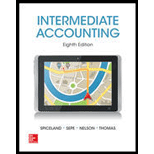
Concept explainers
1.
Method of Inventory: Inventory refers to the current assets that a company expects to sell during the normal course of business operations, the goods that are under process to be completed for future sale, or currently used for producing goods to be sold in the market. Inventory is valued under three methods:
FIFO: Under this inventory method, the units that are purchased first are sold first. Thus, it starts from the selling of the beginning inventory, followed by the units purchased in a chronological order of their purchases took place during a particular period.
LIFO: Under this inventory method, the units that are purchased last are sold first. Thus, it starts from the selling of the units recently purchased and ending with the beginning inventory.
Average cost method: Under this method, the cost of the goods available for sale is divided by the number of units available for sale during a particular period.
To explain: as to why Company K is disclosing the replacement cost of its LIFO inventory.
2.
To Calculate: the beginning inventory and ending inventory that would have been for the year ended February 2, 2014 if Company K had used FIFO for all of its inventories.
3.
To Calculate: the cost of goods sold that would have been for the year ended February 2, 2014 if Company K had used FIFO for all of its inventories.
Want to see the full answer?
Check out a sample textbook solution
Chapter 8 Solutions
INTERMEDIATE ACCOUNTING
- Blueberry Corp. plans to tighten its credit policy. The new policy will decrease the average number of days in collection from 65 to 45, as well as reduce the ratio of credit sales to total revenue from 80% to 70%. The company estimates that projected sales will be 8% less if the proposed new credit policy is implemented. The firm’s short-term interest cost is 8%. Projected sales for the coming year are $32,000,000. Assuming a 360-day year, calculate the dollar impact on accounts receivable of Blueberry Corp. of this proposed change in credit policy.arrow_forwardCrane Company accumulates the following data concerning a mixed cost, using units produced as the activity level. Units Produced Total Cost March 9,970 $20,005 April 8,930 18,154 May 10,500 20,538 June 8,710 17,674 July 9,370 18,604 Using the information from your answer to above part, write the cost equation. (Round per unit produced answer to 2 decimal places (e.g., 2.25).) +A +$ per unit produced × Total costarrow_forwardOn the 5th of the month, Greg Marketing pays its field sales personnel a 3% commission on the previous month's sales. Sales for March 2016 were $1,200,000. What is the entry at the end of March to record the commissions? A. Debit Sales - 36,000$; Credit Sales Commission Expense - 36,000$ B. Debit Sales Commission Expense - 36,000$; Credit Sales Commissions Payable - 36,000$ C. Debit Sales Commission Expense - 36,000$; Credit Accounts Receivable - 36,000$ D. Debit Sales -36,000$; Credit Sales Commission Income - 36,000$arrow_forward
- Net profit is calculated in which of the following account? A) Profit and loss account B) Balance sheet C) Trial balance D) Trading accountarrow_forwardThe debts which are to be repaid within a short period (a year or less) are referred to as, A) Current Liabilities B) Fixed liabilities C) Contingent liabilities D) All the abovearrow_forwardCopyrights, Patents and Trademarks are examples of A) Current assets B) Fixed assets C) Intangible assets D) Investmentsarrow_forward

 AccountingAccountingISBN:9781337272094Author:WARREN, Carl S., Reeve, James M., Duchac, Jonathan E.Publisher:Cengage Learning,
AccountingAccountingISBN:9781337272094Author:WARREN, Carl S., Reeve, James M., Duchac, Jonathan E.Publisher:Cengage Learning, Accounting Information SystemsAccountingISBN:9781337619202Author:Hall, James A.Publisher:Cengage Learning,
Accounting Information SystemsAccountingISBN:9781337619202Author:Hall, James A.Publisher:Cengage Learning, Horngren's Cost Accounting: A Managerial Emphasis...AccountingISBN:9780134475585Author:Srikant M. Datar, Madhav V. RajanPublisher:PEARSON
Horngren's Cost Accounting: A Managerial Emphasis...AccountingISBN:9780134475585Author:Srikant M. Datar, Madhav V. RajanPublisher:PEARSON Intermediate AccountingAccountingISBN:9781259722660Author:J. David Spiceland, Mark W. Nelson, Wayne M ThomasPublisher:McGraw-Hill Education
Intermediate AccountingAccountingISBN:9781259722660Author:J. David Spiceland, Mark W. Nelson, Wayne M ThomasPublisher:McGraw-Hill Education Financial and Managerial AccountingAccountingISBN:9781259726705Author:John J Wild, Ken W. Shaw, Barbara Chiappetta Fundamental Accounting PrinciplesPublisher:McGraw-Hill Education
Financial and Managerial AccountingAccountingISBN:9781259726705Author:John J Wild, Ken W. Shaw, Barbara Chiappetta Fundamental Accounting PrinciplesPublisher:McGraw-Hill Education





